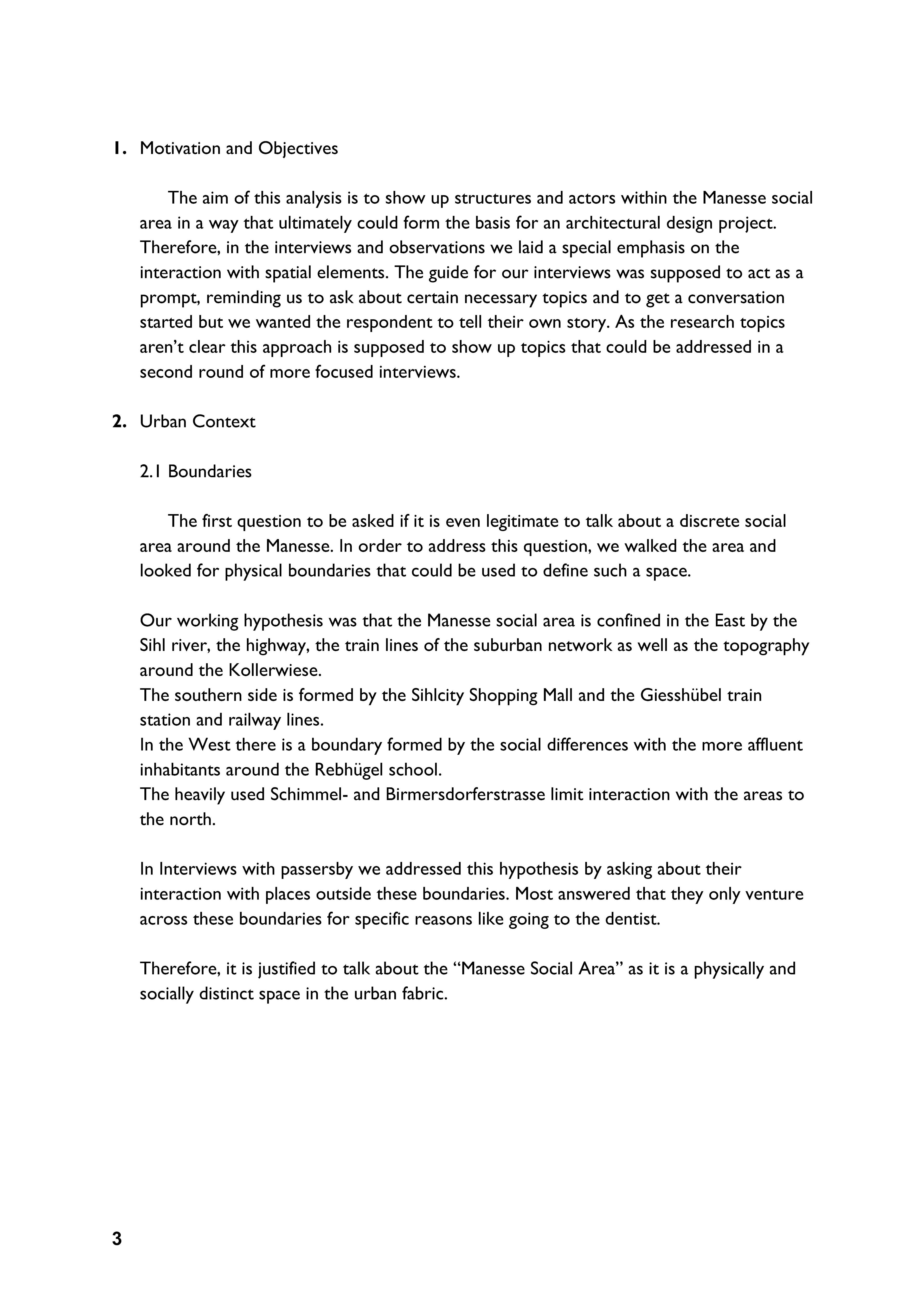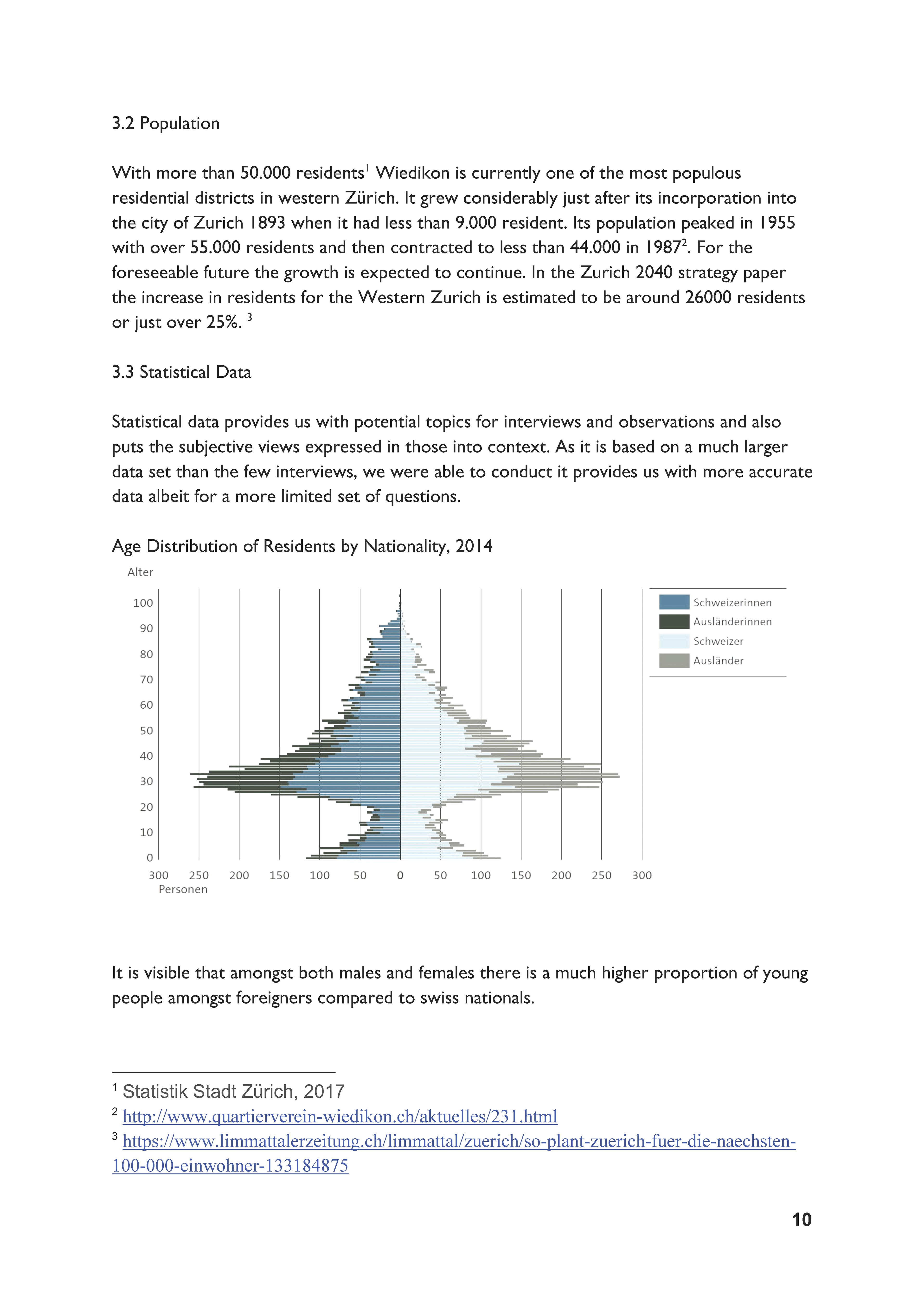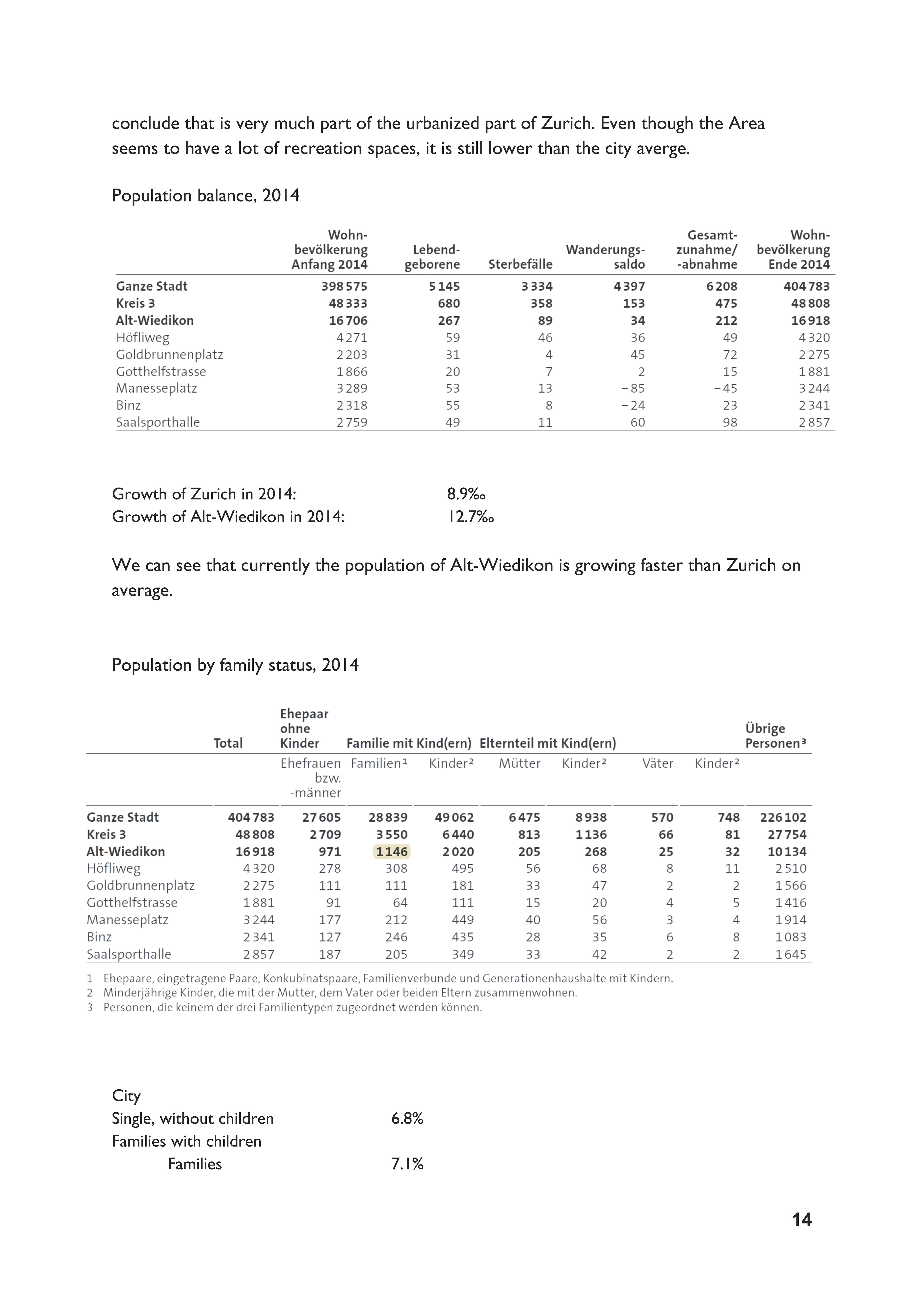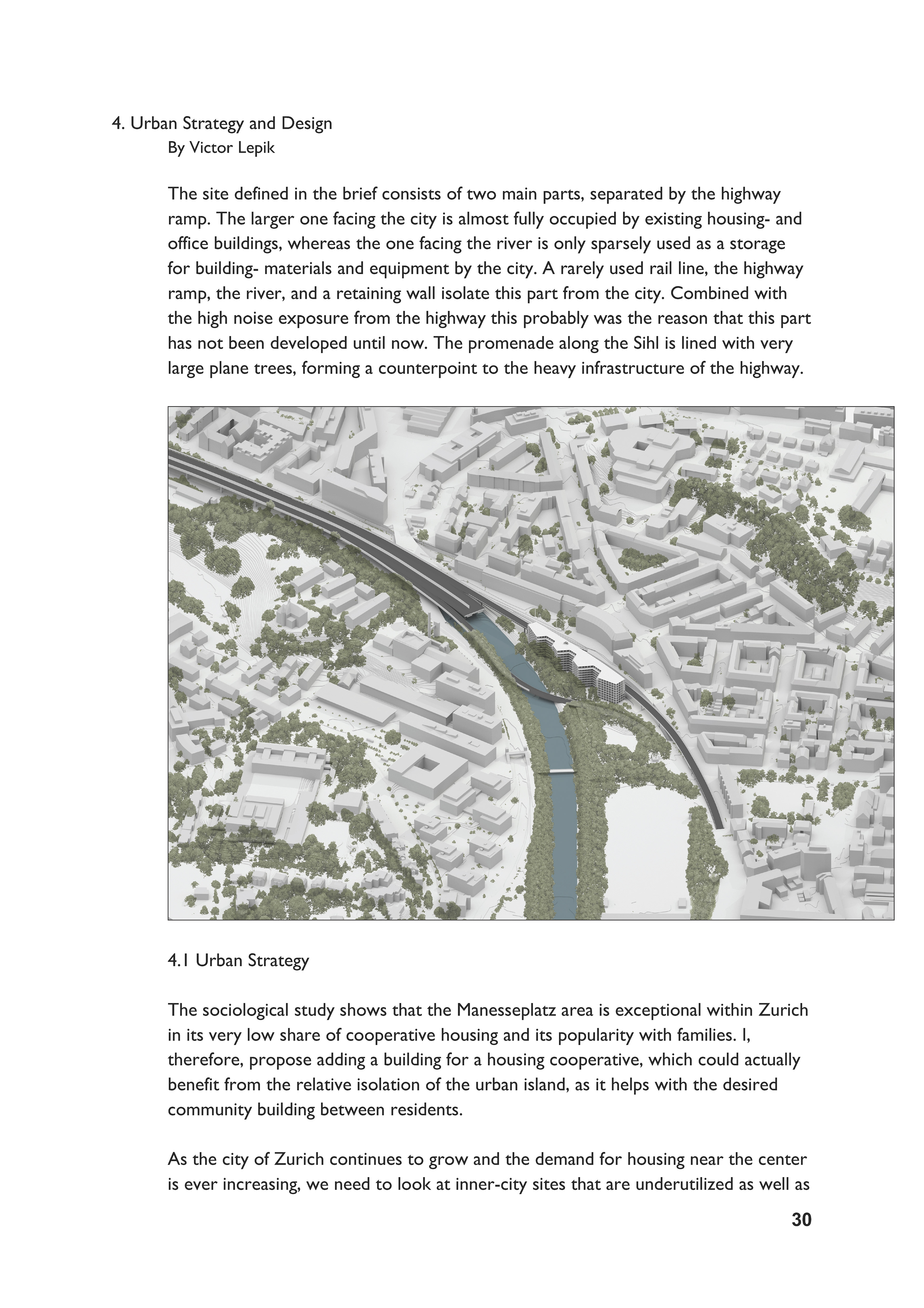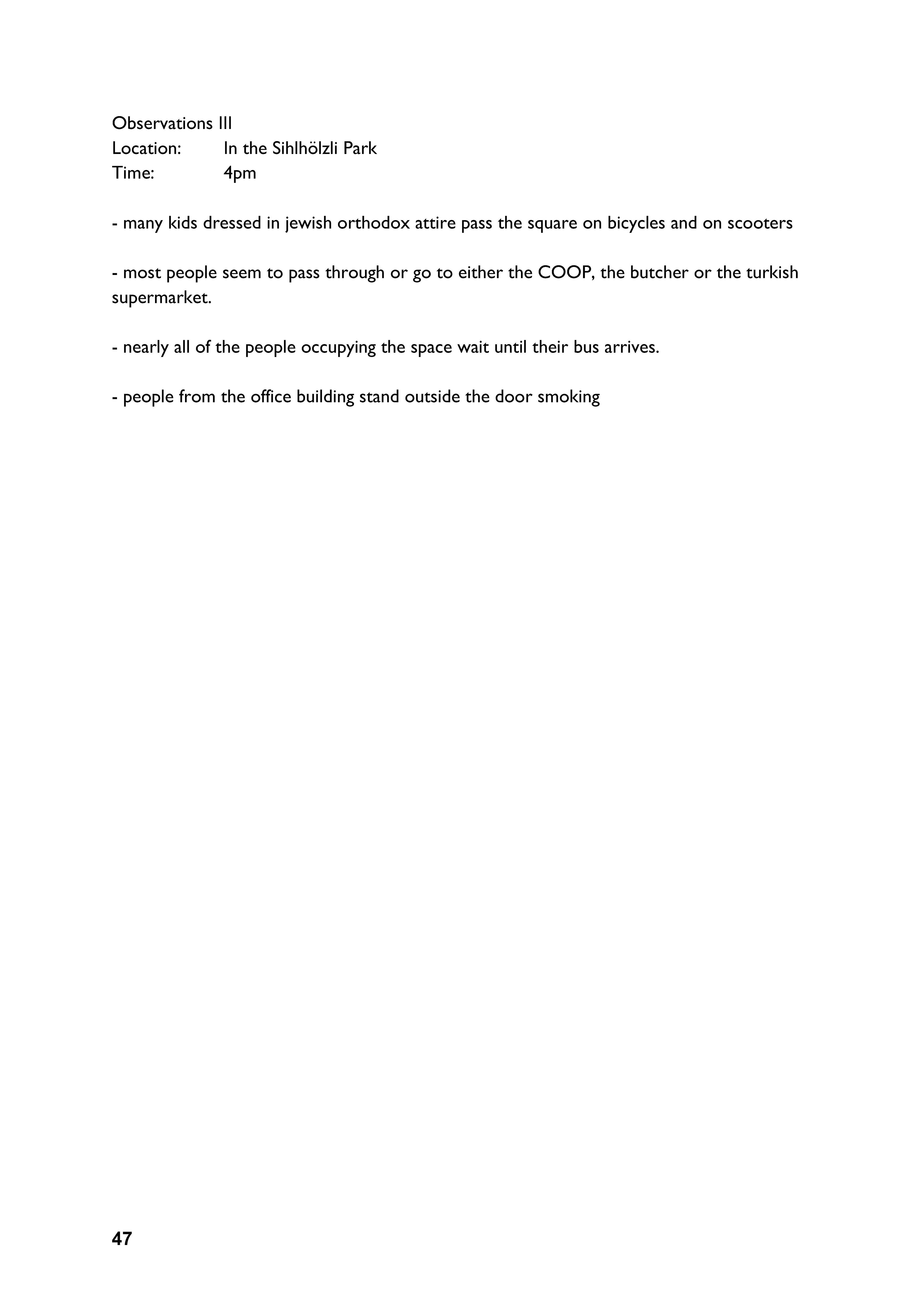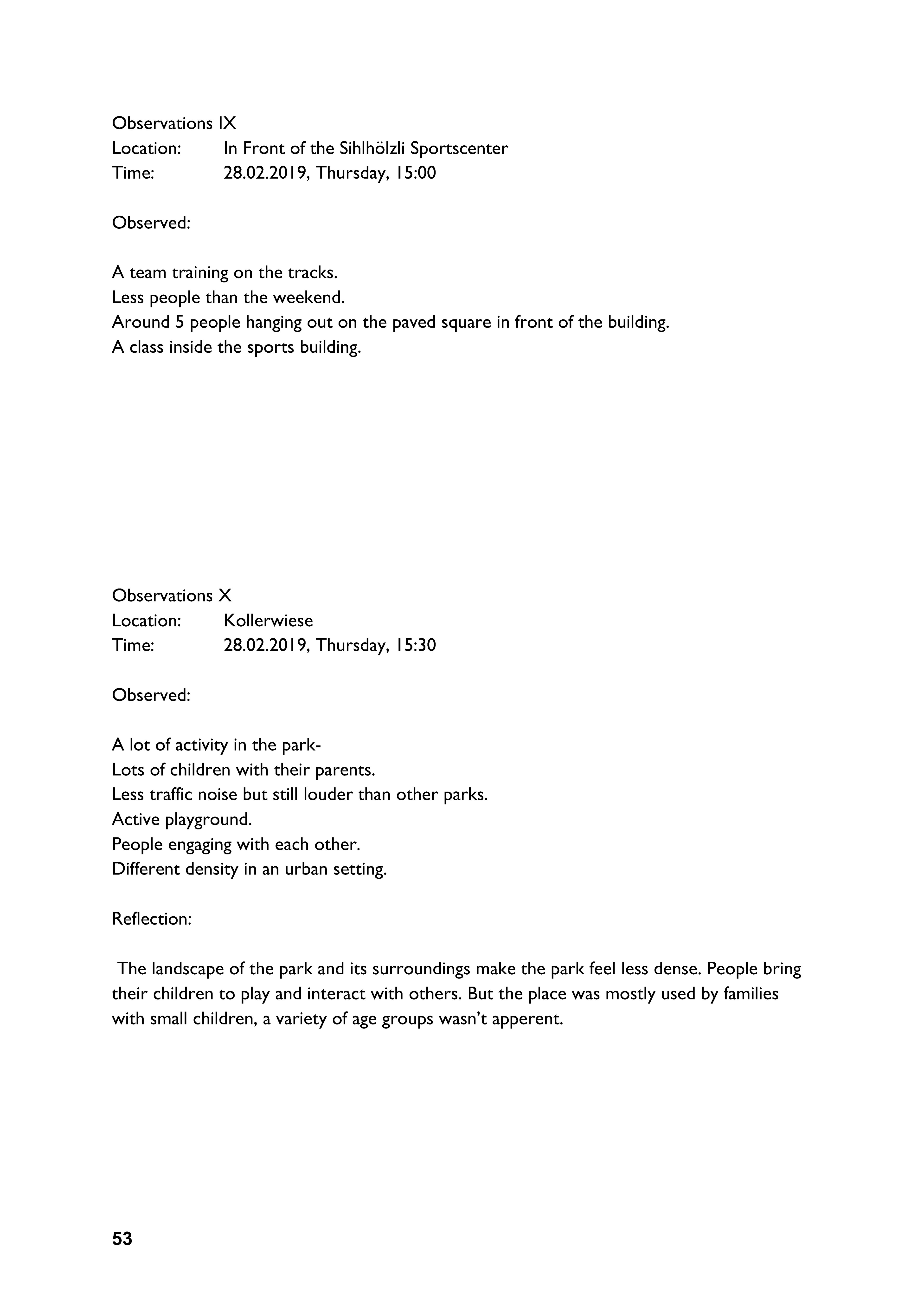The aim of this analysis was to show up structures and actors within the Manesse social area in a way that ultimately could form the basis for an architectural design project. Therefore, in the interviews and observations we laid special emphasis on the interaction of the residents with spatial elements.
The guide for our interviews was supposed to act as a prompt, reminding us to ask about certain necessary topics and to get a conversation started but we wanted the respondent to tell their own story.
As the research topics aren’t clear this approach is supposed to show up topics that could be addressed in a second round of more focused interviews.
The guide for our interviews was supposed to act as a prompt, reminding us to ask about certain necessary topics and to get a conversation started but we wanted the respondent to tell their own story.
As the research topics aren’t clear this approach is supposed to show up topics that could be addressed in a second round of more focused interviews.
Many of the topics we identified in our analysis require a more comprehensive approach than what is possible within the scope of this architecture diploma thesis. With that in mind the sociological research guided my design to be more relevant to the area’s needs. By connecting and attracting more people to the isolated project site through a public infrastructure the Manesse area can gain another character attribute that will keep it active throughout the next densification wave which is expected to happen in west Zurich in the next 20 years.

